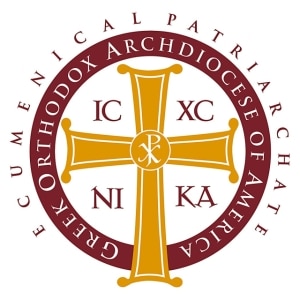What To Expect
What To Expect At An Orthodox Church
Our Worship Uses All the Senses
At an Orthodox Church, you will find that your entire being is involved in worship: sight, smell, sound, touch, and even taste. You will observe icons and burning candles; smell incense; hear communal chanting and prayers (and sounds from our many children!); and watch as people stand, sit, kneel, and even walk around.
We Face the East
All Orthodox churches and services are oriented toward the East, and everyone faces the altar and the icon of our Lord’s crucifixion. At times, the priest will turn and bless the worshippers, cense, and provide the homily. Ultimately, however, we all remain facing East throughout our worship as we anticipate it is the direction from which Christ will return.
Chanting (And Sometimes in Greek)
Almost all of our worship is done through chanting and singing! Our lead chanters help guide the musicality of our services, and worshippers are invited to join in. Although most of the service is conducted in English, you will find a few places in which Greek is sung or said. If you are new to St. Andrew, don’t worry; we provide a service book in which you can follow along.
Icons, Icons, and More Icons
The Orthodox Church is full of reverence for icons and the saints and theological lessons, and spiritual guidance they convey. For us, these are more than mere painted pictures; they are “windows into heaven,” into the sacred realm of God. You will notice that many people approach icons with reverence and respect, bowing down and even kissing them, as one would a beloved friend or family member. Of course, you are always encouraged to wander around and look at our icons and ask questions, too, if you are visiting for the first time.
Veneration for Our Priest, Our Saints, Our Church, and Even Each Other
In the Orthodox Church, you will find that we venerate – bow down and/or kiss – not only icons, but also the cross, relics of the Church, and our priest’s hand. Veneration is not worship, however; it is a special sign of respect, of recognizing that the icon, relic, or person before us was made in the image of God. This, of course, in turn blesses us.
Holy Communion of the Faithful
The penultimate experience of the Eastern Orthodox liturgy is the opportunity to come forward and partake in the Eucharist, or Holy Communion, which we believe is the actual body and blood of Christ. Because this is a sacred ritual with deep spiritual implications and responsibilities, Holy Communion, however, is only reserved for people who have been baptized and chrismated into the Orthodox Church, and therefore, is not available to non-Orthodox worshippers or visitors. Despite this, anyone who visits St. Andrew is welcome to participate in receiving antidoron, or the blessed bread leftover from the consecrated Eucharist, which is offered to everyone at the end of the liturgy!
Etiquette
Visiting an Orthodox Church for the first time can be a heady experience, and as a visitor, you may not be sure of what to do. To help you prepare for your visit, please click here to read our Etiquette suggestions. We’re also here to answer your questions and invite you to participate in as little or as much of the service as you feel comfortable and to answer any questions you may have.
Theological Considerations and Learning More
The Orthodox Church is the original Apostolic Church, unbroken since the time of the apostles. To read more in depth about what we believe in the Orthodox Church, we encourage you to here.
